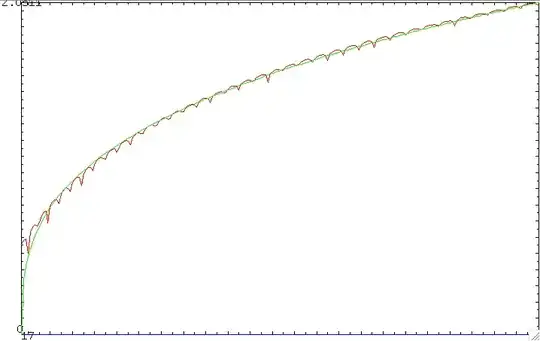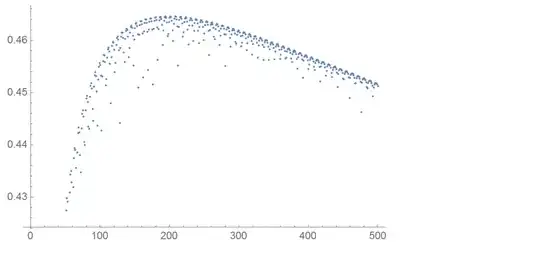UPDATED:
Since Apostol's table is imprecise for the latest values let's exhibit this partial table of $n!+\zeta^{(n)}(0)$ values obtained with the method proposed by Gottfried Helms in the comments :
$
\small \begin{array} {r|l}
n&\qquad n!+\zeta^{(n)}(0)\\
\hline
0 & 0.500000000000000000000000000000000000000000000000000000000000000000 \\
1 & 0.0810614667953272582196702635943823601386025263622165871828484595172 \\
2 & -0.00635645590858485121010002672996043819899491016091988116986828085776 \\
3 & -0.00471116686225444776106081336637528546180766829598013289308154130860 \\
4 & 0.00289681198629204101278047225899433810886006507829657502399066695362 \\
5 & -0.000232907558454724535985837795819747892057172470502296621517290052364 \\
6 & -0.000936825130050929504283508545398558763852909268098676811811642454272 \\
7 & 0.000849823765001669151706027602351218392176760368993802245821950220545 \\
8 & -0.000232431735511559582855690063716869861547455605351528951730144900587 \\
9 & -0.000330589663612296445256127250159219129163115391201597238597920006568 \\
10 & 0.000543234115779708472231988943120310085619430025648031886746513765534 \\
11 & -0.000375493172907263650467030884105539552908523317127333739022948360384 \\
12 & -0.0000196035362810139197664840250843355865881821335996260346542408699771 \\
13 & 0.000407241232563033143432121366810273073439244495052894296377049143472 \\
14 & -0.000570492013281777715641291383838137142317654464393538891561665994592 \\
15 & 0.000393927078981204421827660818939487435931013173319003367358811853101 \\
16 & 0.0000834588058255016817276488047155531844625161484345203508967032195293 \\
17 & -0.000660943729628596896169402998134057724748414684628214724260392025847 \\
18 & 0.00102622728654085400217701415546883787759831069743902026886240548348 \\
19 & -0.000865575776779282991576072414036571104593129616540810229322531122882 \\
20 & 0.0000192936717837051401063299760357760104805477068753543599966583874264 \\
21 & 0.00135690605213454946114913783265117619902887065782808784758635491569 \\
22 & -0.00269215645875329128403425710948994793671854878855377935283522438652 \\
23 & 0.00305138562124162713884543738615856563404395363868348883899894968459 \\
24 & -0.00142429184941854585322218679179524558923410706804512920069410425063 \\
24 & -0.00142429184941854585322218679179524558923410706804512920069410425063 \\
25 & -0.00270778921288600678819748219175554231288488376985887236498730634210 \\
30 & -0.0264657041470797526937304048599592953393370731885768642502823064627 \\
35 & -0.263594454732269692589658594912151283515046273581182559219921957221 \\
40 & -2.99127389405887676303274513146663241574504274783600393720076526420 \\
45 & -37.8116918598476995713457928854407359489376750764425231304638226967 \\
50 & -484.410856973911340196834881321159996957875322777427689682560124377 \\
55 & -4532.79225770921715189195122554511879361201057777310708972171082184 \\
60 & 62714.1067695718525498151218611523939474897844785985218047818417901 \\
65 & 7023172.71452427788836637890070922964875579872202726818830758507697 \\
70 & 369710251.754342613761487189243065702707445997550023978646801198349 \\
75 & 16153042555.8916006284817291830191070360270906645699878986789707549 \\
80 & 615738270543.419763620055014818673603045117612121993882170431591493 \\
85 & 18734769337973.5357476254698119630570458879847958412519956399551375 \\
90 & 236370935383452.039427873106518081170156120659521416134138380827174 \\
95 & -26002457205974856.1210597020683157222183992446452182712157359931706 \\
100 & -3067048412469082717.13203493456872773456001456014271660974790930507 \\
105 & -208147105464557539810.933105520613946023324136236314019489461672300 \\
110 & -9181100257482418076527.78433198963677385024539967354760263208242840 \\
115 & -51947662171852808135142.6566163041506055684371473226227514782141120 \\
120 & 40156333121359621232445103.0657969214804033377921435547843142396453 \\
125 & 4885455264162691954362582051.19629295409841919596706506250394536303 \\
130 & 326172379219132017786027255436.163662671728811426407157377065370050 \\
135 & 5681896814647267766788984138309.92777649447549648680365985502173310 \\
140 & -1823873410669202891713087061952487.29233810951837725134296601143730 \\
145 & -287161238605183347710570327381611857.621502693613616741540893113635 \\
150 & -21305861581790622498949173421790799625.1089486390817454023538053647 \\
155 & 41341935656925531212500416560539095352.2344118482658208289324353056 \\
160 & 247591097041903905305863994419088881629306.695276383394597551295589 \\
165 & 35417487509305790307439844806554155410647762.2818942813077054202595 \\
170 & 1939388852429349721510180790653718054320127522.76657886070312620767 \\
175 & -219609544533102325798714608918968968215179933676.462881353291615996 \\
180 & -64398214417872662764963987879167602127249665707913.3748997726013799 \\
185 & -6471529441461413822723169640664516218513802097544790.17826333568557 \\
190 & 124737730975894951649278632325321300323483372940042824.738271112913 \\
195 & 146090125339857661850314283330560855583771401129477483038.196790939 \\
200 & 21761038288742061134507006188990514804372485347492068735353.4677389 \\
205 & 448206643590051608263691568113493984443540648811947725902790.626596 \\
210 & -436802309714509751568738654004051406952276718382033685343775072.767 \\
215 & -87517428053442479414927505641545087908985720235451301367834785555.4 \\
220 & -3.84724299091446288828137723409916186345658241907462046206042911305E66 \\
225 & 1.78354688800770241687161303825386645838232647101391084926254576406E69 \\
230 & 4.39266696650096770242083480719428532550626963368237730956507167675E71 \\
235 & 2.44222335896278620212620252751346268294589748965319118864768279107E73 \\
240 & -1.01131768916824854497126506938489065442700604328045419557651761065E76 \\
245 & -2.76259374758593015959757159949637125866476599264626984421242976978E78 \\
250 & -1.51090342799297835940857060215282929045189635533361177391732022698E80
\end{array}
$
(updated 3.12.2016, values from index 200 to 250 had to be corrected)
I fear that this will grow without bounds even if much slower than $n!$ but an asymptotic formula could be conjectured from these values !
Concerning the limit :
$$\lim\sup_{n\rightarrow\infty}\left(\frac{\delta_{n}}{n}\right)^{\frac{1}{n}}$$
I can only show you the 'brainy' picture obtained for values of $n$ from $1$ to $250$ :

The largest value obtained is near $2.047$ but this doesn't seem to stop.
Note that this is nearly the same picture than for $\ \lim\sup_{n\rightarrow\infty}\left(\delta_{n}\right)^{\frac{1}{n}}\ $ (division by $n$ doesn't matter much).
If we observe that the real takeoff of $\delta_n$ waits until $n=25$ then a not too bad approximation of the previous curve is :
$$f(n)=\frac{\sqrt[3]{n-17}}3$$
represented here (for $n$ from $17$ to $250$) :

I tried to divide $\delta_n$ by different expressions in your limit and found :
$$\ \lim\sup_{n\rightarrow\infty}\left(\dfrac{\delta_{n}}{\sqrt[3]{n!}}\right)^{\frac{1}{n}}\ $$

with the interesting 'saturation' near $0.4646$.
//Scripts used (pari/gp) :
//Method proposed by Gottfried Helms (precomputed Stieltjes table)
zs(n)=(-1)^n*sum(k=0,#Stieltjes-n-1,Stieltjes[k+n+1]/k!)
//Direct evaluation of the nth derivative at z (ep= 1E-50 or less)
zp(z,n,ep)=sum(k=0,n,(-1)^k*binomial(n,k)*zeta(z+(n-2*k)*ep))/(2*ep)^n



